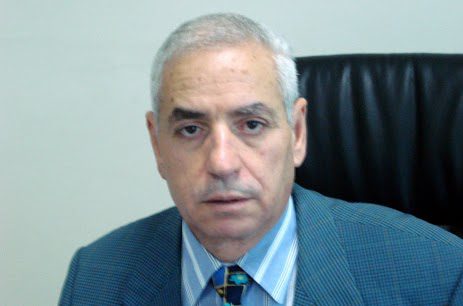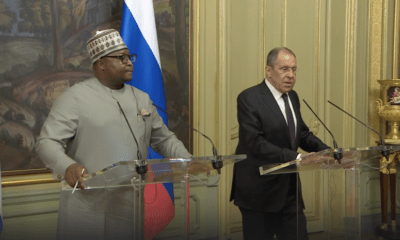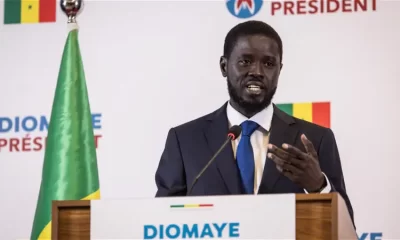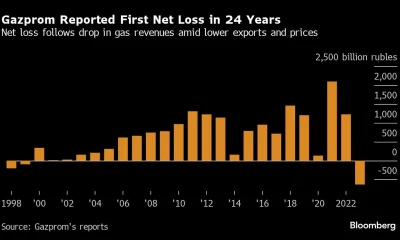Global Issues
The Middle East NATO: Fact or Fiction? -By Dr Mohamed Chtatou
Saudi Arabia, a major Arab power, has not signed a peace treaty with Israel and does not maintain diplomatic relations with it. However, some Saudi defense analysts have no doubt that Riyadh could become part of MEAD, provided the United States resolves all its outstanding disputes with the Kingdom and resumes its role as guarantor of regional security.

An anti-Iran military alliance in the Middle East, similar to NATO, was said to be in the making ahead of the US president’s visit to the region, according to the Iranian newspaper “Iran Emrooz“.[i]A North Atlantic Treaty Organization (NATO) stretching from the Middle East to the Western Mediterranean? The scenario is taking shape and is becoming more and more obvious every day.
Middle East military alliance
After his trip to the United Arab Emirates on June 23, 2022, King Abdullah of Jordan said in an interview with the U.S. channel CNBC that his country would support the formation of a military alliance, similar to NATO, between allied countries in the Middle East.
In this regard, Abigail Ng wrote in CNBC news: [ii]
‘’Jordan’s King Abdullah II said he would support the formation of a Middle East military alliance similar to NATO, and that it can be done with countries that are like-minded. The kingdom works actively with NATO and sees itself as a partner of the alliance, having fought “shoulder-to-shoulder” with NATO troops for decades, the monarch told CNBC’s Hadley Gamble on Wednesday. “I’d like to see more countries in the area come into that mix,” he said. “I would be one of the first people that would endorse a Middle East NATO,” Abdullah said. But the vision of such a military alliance must be very clear, and its role should be well defined, he added. “The mission statement has to be very, very clear. Otherwise, it confuses everybody,” he said.’’
The Jordanian leader said he would be “one of the first to support the launch of a NATO in the Middle East,” stressing the need for such an alliance to have a “very clear mission” to avoid “confusion.’’ He also said that the allied states in the region have been working together for some time to address the challenges caused by the war in Ukraine, saying: “We will meet to see how we can help each other“.
According to the new U.S. political strategy, the Middle East is not a priority for Biden’s administration, but rather Ukraine, China, and the U.S. mid-term elections are more pressing issues. However, on his first visit to the region, in Tel Aviv, on July 13, 2022, Biden was confronted with a rapidly changing and still unstable part of the world.
Thus, he unveiled his main objective of convincing Saudi Arabia of the need to increase global oil supplies to alleviate the latest energy crisis triggered by the war in Ukraine, insisting that the main purpose of his visit must, despite everything, respect fundamental American values.
In this context, a meeting of U.S. military officials was organized, with their counterparts in Israel, Jordan, Egypt, and several Gulf countries. The meeting in the Egyptian city of Sharm el-Sheikh focused on exploring ways to coordinate against Iran’s growing missile capabilities and its drone program.[iii]
So did the U.S. president’s visit to the Middle East include a “hidden agenda”? The Middle East has always been known as a tense area, where the inflamed situations in Syria, Lebanon, Iraq, and Yemen, and the attempt to transfer instability to the Gulf States, have all led to a rethinking of Arab security and military coordination. And this is actually closer to forming an alliance like NATO.
On the other hand, this “NATO” would include: Israel, the United States, Jordan, Egypt, Saudi Arabia, the Emirates, Bahrain, and Sudan, and this alliance would not have the role of forcing these countries to defend each other, but rather it would be a regional forum that would publicize the existing security relationship between Israel and the six Arab countries.
Probably, the idea of forming a military alliance in the Middle East with the necessary participation of Israel could be the product of the Arab regimes’ fear of the growing Iranian capabilities and the return of Islamic political movements,[iv]and their anxiety about the repercussions of the Russian-Ukrainian war.
Alliance reminiscent of the Baghdad Pact of 1950
In light of the failure of the formation of a Middle Eastern military alliance in the past, reminiscent of the Baghdad Pact[v] in the 1950s, it seems that the United States wanted to repeat the experience for the sake of Israel, and thus, probably, weaken the Palestinian cause. The demand of some Gulf Arabs is not to freeze the Iranian nuclear program, but rather to stop the Iranian missile program.[vi]
For Shyam Bahtia, writing in the Jewish Chronicle, states that the process of the Middle Eastern NATO actually started after the Abraham Accords: [vii]
‘’The process started with the signing of the Abraham Accords two years ago which resulted in normalising relations between Israel and three Arab countries: Morocco, the Gulf Arab states of the United Arab Emirates (UAE) and Bahrain. Their historic agreement emerged from a perception that Israel and the Arab region face a common threat from Iran. Following the accords’ signing, Israel, the UAE and Bahrain have been engaged in a wide range of discussions of mutual security needs, including protection from Iranian military drones that Tehran has so far deployed in Yemen and Iraq.’’
This major new development of open and friendly relations between Israel and some Gulf Arab states in a region plagued by turmoil, endemic civil wars, shifting geopolitical alliances, and competition between rival alliances seeking to expand their spheres of influence and determine the destinies of the region’s weak and fragmented states, has acquired strong strategic significance on the Gulf side and has emerged as a new dynamic for the Middle East in the 21st century. [viii]
The world is waiting… Will the Gulf Arabs tell Biden that they will not accept any agreement that does not put pressure on Israel to reach a just or even semi-just solution to the Palestinian question, and will they reject any agreement that does not provide not only for a freeze on Iran’s nuclear program, but also for a freeze on the missile program, and above all for an end to Iran’s influence in the region?
In a 1997 report entitled ‘’NATO and the Mediterranean,’’[ix] Javier Solana, then Secretary General of NATO, stressed the importance of the Mediterranean as a component of the European security architecture. Since then, the Atlantic Alliance has shown renewed interest in the Mediterranean area. The political stakes involved and which weigh on their evolution will therefore be the subject of an initial reflection, before presenting the various initiatives carried out since the post-Cold War period in order to identify the effectiveness but also the limits of this transatlantic presence in the region.[x]
Since its creation in 1949, NATO has undergone numerous political and military transformations, and at the Rome summit in November 1991, a doctrinal approach emerged within NATO’s New Strategic Concept,[xi] which specifies that the Allies wish to maintain “peaceful and non-conflictual relations” with the countries south of the Mediterranean and in the Middle East. The peripheral zone of Europe, which had been left aside until then, is now of great importance for the maintenance of regional stability and, moreover, for the security of the Alliance. The Gulf War in 1991 thus highlighted the possibilities of NATO as a platform for discussion and political and military cooperation between all the allies. This new doctrine also announced the process of NATO’s enlargement to Eastern European countries and the beginning of an engagement outside its usual territory.[xii]
In this way, the new Strategic Concept adopted in November 2011 at the Lisbon Summit [xiii]makes cooperative security one of the three key priorities of the Alliance. The advent of a new generation of partnerships has contributed to the development of cooperation among Mediterranean countries, with specific reference to the “Mediterranean Dialogue” in the following terms: [xiv]
“We are strongly committed to the development of friendly and cooperative relations with all Mediterranean countries, and we intend to further develop the Mediterranean Dialogue in the coming years. We will work to deepen cooperation with those countries currently participating in the Mediterranean Dialogue and remain open to the inclusion of other countries in the region in the Dialogue.”
But while NATO is working to develop initiatives and partnerships, the Mediterranean remains an increasingly problematic region. The Sea Guardian mission is also the theater materializing the differences between the members of the Alliance. Begun in June 2016 as a continuation of Operation Active Endeavour, the Sea Guardian mission aims to conduct maritime surveillance, fight terrorism and build capacity in the Mediterranean region. It aims to identify and prevent the development of crises in the region, as well as being a platform for dialogue for Mediterranean states on security issues. The Sea Guardian mission is in close collaboration with the EUNAVFOR MED operation led by the European Union.
Finally, the demand for a major NATO investment in the Mediterranean and the Middle East appeared at the end of the Cold War. It was at this precise moment that the United States expressed its interest in the Mediterranean with regard to European security. While the U.S. 6th Fleet has been present in the Mediterranean since 1950, cooperation with NATO allies intensified during the Cold War to counter the Soviet threat, and then at the beginning of the 21st century to deal with new threats. The 6th Fleet is composed of approximately 40 ships and its presence is a testimony to the representation of the transatlantic link that the United States is developing through crisis management in the Mediterranean.[xv]
The different countries of the region, threatened by destabilization, became subjects of the utmost importance and the apprehension of a new threat coming from various factors made the southern flank of NATO a priority. If there is a will to develop this cooperation between the members, what are the concrete plans put in place, and do they appear to be fully effective?[xvi]
However, the whole concept of a Middle Eastern alliance is still hazy, to say the least, and this is what argues Daniel Brumberg: [xvii]
‘’Biden’s July 15 visit to Riyadh, meanwhile, unfolded against a very different and far more challenging background. For the leaders of the UAE and for Saudi Arabia’s Crown Prince Mohammed bin Salman (MBS), one purpose of the trip was for the US to make amends for past slights and insults, not least of which was Biden’s campaign promise to treat Saudi Arabia as a “pariah.” But the ultimate strategic purpose of the trip from the Gulf’s point of view was to move beyond hurt feelings to achieve an exchange of views regarding the evolution of regional security cooperation. Iran and its regional allies loomed large in the ensuing talks, while Russia and China’s growing footprints in the region formed an important, if more implicit, concern that animated the administration’s outreach to Gulf leaders.’’
Middle East Air Defense Alliance (MEAD)
Growing perceptions of Iranian aggression in the Middle East, as well as Washington’s desire to reduce Russian and Chinese influence in the oil-rich Gulf Arab states, have sparked intense diplomatic battles in recent months that could lead to major tectonic shifts in the political and military landscape.
Although the United Arab Emirates, Bahrain, Egypt, and Jordan have signed peace treaties with Israel and established diplomatic relations, they have not formed formal military alliances or engaged in defense cooperation programs.
Saudi Arabia, a major Arab power, has not signed a peace treaty with Israel and does not maintain diplomatic relations with it. However, some Saudi defense analysts have no doubt that Riyadh could become part of MEAD, provided the United States resolves all its outstanding disputes with the Kingdom and resumes its role as guarantor of regional security.[xviii]
For his part, Israeli Defense Minister Benny Gantz announced that Israel has joined what he called the Middle East Air Defense Alliance (MEAD), a U.S.-led regional air defense network that includes some Arab countries. Although Gantz did not name the Arab countries, many observers speculate that MEAD would likely include the UAE, Saudi Arabia, Bahrain, Qatar, Egypt, and/or Jordan.
Saudi Arabia has been pushing for more U.S. support in the fight against Iran-allied Houthi militias in Yemen, which have fired more than 200 ballistic missiles and dozens of suicide drones against the Kingdom over the past seven years. Saudi oil fields were even attacked in 2019 by drones and cruise missiles largely believed to come from Iran’s direction.
Several U.S. Democratic lawmakers have criticized the Saudi war in Yemen, in which critics have alleged war crimes, and subsequently blocked several contracts to provide it with precision weapons. The Biden administration also imposed conditions on a deal to sell F-35 fighter jets and MQ-9B attack drones to the UAE. The UAE decided to withdraw from the deal in protest.
But Russia’s offensive against Ukraine and Moscow’s efforts to convince the Gulf Arab states to keep oil prices high and not join Western sanctions against it has created a new political reality that is causing the Biden administration to reconsider its policies toward the region.
In addition, the stalled talks with Iran to revive the nuclear deal and Tehran’s acceleration of large-scale uranium enrichment have put pressure on Washington to come up with an effective alternative policy that would reduce the concerns of its Middle East allies and ensure U.S. military support.
Speaking of the importance of MEAD to the Knesset’s Foreign Affairs and Defense Committee, Benny Gantz said: [xix]
“This alliance has already thwarted Iranian attempts to threaten Israel and other countries in the region. President Biden’s visit [to the region] will support this process. In face of Iran’s threat to carry out an attack [on Israeli citizens in Turkey], I have directed the defense establishment to prepare a powerful response. We have a variety of options at our disposal, and we will respond to any harm directed at the citizens of Israeli, at the time and place of our choosing.”
According to Benny Gantz, the MEAD defense structure will allow Middle Eastern countries to better protect themselves from Iran’s attacks using rockets, cruise missiles, and UAVs. However, for Samuel M. Hickey from The National Interest: ‘’ An Israel-Arab Air Defense Coalition Could Harm the Middle East.’’[xx]
From Arab NATO to Middle Eastern NATO
Clearly, the region remains of great geopolitical importance, and the West – Europeans even more than North Americans – cannot ignore it. The Middle East is home to the most abundant hydrocarbon reserves in the world, but also the easiest to extract. Even if the main producers in the region no longer control the oil market, they will remain at the center of the world’s energy geography. The Middle East is also a pivotal area between Europe and East Asia: the Chinese Belt and Road Initiative (the “new silk roads”), with its maritime branch, reminds us of this. We must also be attentive to the situation in Yemen and not neglect the dual threat posed by the Houthists, supported by Iran, and the Al-Qaeda group, which is quick to exploit the chaos: a third or more of world trade passes through the Bab-el-Mandeb strait (south of Yemen). Finally, the Middle East, which threatens to explode under the effect of powerful strategic contradictions, is located in Europe’s immediate vicinity. So how can it be left out of the equation? An overview of the area shows the decisive importance of regional alliances, particularly in the Arabian Gulf, with Saudi Arabia and the United Arab Emirates, powers that are closely confronted with the Iranian-Shiite regime.
More than two years ago, it was announced that a “Strategic Alliance for the Middle East” would be established, which observers quickly dubbed “Arab NATO”. Under Washington’s leadership, such an alliance was intended to protect the region from the dual threat of Iranian-Shiite expansionism and Sunni-based jihadism. In truth, it was a sea serpent. Without going back to the “Baghdad Pact” (1955), which was quickly emptied of substance, several initiatives had been launched. In 2011, the developments and aftermath of the Arab Spring brought back the idea of an alliance covering the Middle East. The United States and its Gulf Cooperation Council (GCC) allies set up working groups. The rise of the Islamic State then prompted Saudi Arabia to create an Arab and Sunni coalition that included some 40 states (2015). Engaged in Yemen, against the Houthist rebels supported by Tehran, this coalition has since shown its political, military and operational limits.[xxi]
The imperialism of many local leaders, the contradictions between the Sunni Arab regimes, and the ambivalence of American policy in the Middle East explain the failure of these initiatives. In fact, the Obama Administration favoured the signing of an agreement on the Iranian nuclear issue (July 14, 2015) and therefore stood back from the Syrian conflict, which did not contribute to the formation of a solid regional whole. By working to establish a balance between Riyadh and Tehran, Barack Obama sought to distance himself from regional geopolitics, which ruined the Arab-Sunni alliance projects. The undermining of the U.S.-Saudi relationship prompted Riyadh to explore the possibility of a rapprochement with China, which now absorbs the bulk of regional hydrocarbon exports. The prospect partly explains the reversal that occurred under Donald Trump, who was hardly enthusiastic about the United States’ regional alliances. The priority given to the Iranian threat also changed the situation. During his state visit to Riyadh in May 2017, the idea of an “Arab NATO” was therefore discussed. However, the isolationist temptation, the difficulty of developing a coherent American strategy in Syria and the region, and the diplomatic conflict between Qatar and its neighbors have postponed the deadline sine die.
The “Arab NATO” moment seems to have passed, but the threats are still more active. The Iranian-Shiite regime is being singled out, but Sunni jihadism is also mentioned by Donald Trump. Finally, it is likely that the Russian breakthrough in the Middle East, via the alliance with Damascus and Tehran, and the Chinese game of go in the region will be taken into account by American decision makers and strategists. While the “Arab NATO” project was not devoid of geopolitical rationality, its concrete translation was hypothetical, as the state of the GCC did not bode well. Established in 1981 to respond to the threats posed by the Shiite Islamic revolution in the Strait of Hormuz, this club of Sunni Arab monarchies and its military extension (the “Gulf Shield”) could not be transformed into a true alliance. Above all, only a determined American commitment would have made it possible to resolve the conflict over Qatar and to overcome the differences in approach of the Sunni Arab regimes. All in all, the lack of unity and continuity of American views at the top of the State did not help to overcome regional contradictions. No more “Arab NATO”? The fact is that the project seems out of season.
Are relations between Americans and Arab “allies” in the Gulf weakened?
Strategic clarity is no longer the order of the day since the Obama era. The priorities of both sides have changed. The Gulf states want above all to contain Iran, while Biden is trying to push back Russia and manage the rise of China. These American priorities involve difficult choices for the Gulf states, which do not want to be caught up in these complicated dynamics. There are no longer any illusions on either side about the terms of the partnership to be maintained between them.
There is certainly a desire for autonomy on the part of Saudi Arabia, but the United States remains the only possible partner for its defense. The Gulf states need the Americans for their regional defense systems and to maintain a regional balance. But the relationship is becoming more transactional and cynical. Biden’s initial ambitions for a more human rights-oriented agenda are going out the window. He wants to keep his distance on a personal level while maintaining the relationship on a strategic and economic level.
The United States would like to move in this direction, but it knows that it is very difficult to put in place operationally. Rather than a formal alliance on the NATO model, it is possible to strengthen defense systems, in particular with increased information exchange, and cooperation in terms of air defense systems and in the maritime domain. Formal security guarantees remain highly unlikely.
The United States would like to move in this direction, but it knows that it is very difficult to put in place operationally. Rather than a formal alliance on the NATO model, it is possible to strengthen defense systems, in particular with increased information exchange, and cooperation in terms of air defense systems and in the maritime domain. Formal security guarantees remain highly unlikely.
A year ago, Yemen was the leading issue in Washington. In the meantime, it has become clear that Saudi Arabia has moderated its approach and is looking for a way out. Today, there is more of a convergence between the Americans and the Saudis, in part because Washington has realized that the Houthi rebels were at the root of the political stalemate.
Everybody knows the threat that Tehran’s expansionism and the opening of a “Shiite highway” across the Middle East represent for Israel, but the Sunni Arab regimes are just as much at risk. Already, the Pasdaran[xxii] boasts control of four Arab capitals: Baghdad, Damascus, Beirut and Sanaa. However, the case of Yemen is often discussed only from a humanitarian perspective. Certainly, the weight of the past (the Marxist regime in South Yemen), the support given to Saddam Hussein during the invasion of Kuwait (1990), and the late unification of the country (1991) partly explain the geopolitical situation.
The capture of Sana’a and the exile of the legal government (2014), led to the intervention of an Arab coalition led by Riyadh and Abu Dhabi (March 2015). In violation of the UN arms embargo, the delivery of Iranian ballistic missiles to the rebels and their use against Saudi Arabia could extend this conflict. The Houthists are thus proving to be the auxiliaries of the Iranian-Shiite regime in its enterprise of regional domination, on the back of the Gulf monarchies. This issue also has a strong international dimension: the main maritime route between Europe and Asia passes through the Bab el-Mandeb Strait and the Gulf of Aden, a bottleneck for world trade.
President Donald Trump’s unfulfilled plan to form a Gulf NATO
The United States has displayed the ambition to achieve the formation of a united anti-Iranian front, an idea cherished since President Donald Trump’s visit to Saudi Arabia on May 22, 2017. This visit had given rise to several meetings, in addition to the bilateral meeting between the American president and the Saudi king, a second with the leaders of the countries of the Cooperation Council of Arab States of the Gulf, and a third with the representatives of the 55 Arab and Islamic states gathered for the occasion in Riyadh.
On July 28, 2018, media outlets such as The National,[xxiii] echoed the fact that U.S. President Donald Trump was planning to invite the Gulf Arab countries to a summit in Washington, D.C., for mid-October 2018, with the ambition of strengthening cooperation between the Gulf leaders and the United States in the security, military and political fields to counter Iran.[xxiv] The summit had originally been scheduled for May, but meetings on North Korea and the impasse in the dispute with Qatar had already delayed it until October 2018. For the U.S. administration, this was to be an opportunity to announce the establishment of an institutional framework called The Middle East Strategic Alliance (MESA), a sort of “Arab NATO” intended to form an alliance of Middle Eastern states to counter what was perceived as Iranian expansionism in the region. The alliance, which was to include Egypt, Jordan, and the six countries of the Gulf Cooperation Council, would have aimed to encourage military cooperation among the countries, particularly in missile defence and counter-terrorism. MESA was meant to serve as a bulwark against Iranian aggression, terrorism, extremism and bring stability to the Middle East. Working groups that were supposed to meet in August and September 2018 were to set the agenda.
But things did not go as planned. The Trump Administration had been forced to postpone the said summit several times. In September 2018, the American president had postponed it for the second time. The delay, first reported by the Al Monitor website, [xxv]was to temporarily postpone the summit to January 2019. The news site had attributed the delay to “US President Donald Trump’s travel schedule before the November midterm elections.” However, some sources, speaking on condition of anonymity, had told The National[xxvi]that this was related to the Qatar dispute, even though the Administration seemed convinced that it was able to bring together the leaders of the Gulf and create its Middle East Strategic Alliance (MESA) format, skipping the resolution of the Qatar dispute.
Final word
The threat posed by Iran outweighs the hatred these nations have for Israel and the differences between them. Iran is the world’s leading sponsor of radical Islamic terrorism and is close to obtaining nuclear weapons. Iran also exports thousands of drones and missiles to its various proxies and destabilizing elements throughout the region. This is why many in the Middle East are so eager to create an air defense alliance.
However, the Qatar crisis was not the only obstacle standing in the way of MESA. The GCC is perfectly capable, for example, of sending an armored column onto the causeway between Saudi Arabia and Bahrain, to quell the 2011 civic uprising by the island’s Shiite majority. But for all its American weaponry, it cannot defeat a ragtag army of Iran-backed Shiite Houthis in Yemen, in a ruinous war launched in March 2015 by Mohammed bin Salman, now the Saudi crown prince.
Until recently, the only cause that united these Middle Eastern countries militarily was Israel. Since its declaration of independence in 1948, Israel has been repeatedly attacked by its Arab neighbors. This, unfortunately, led many Muslim countries to adopt the “three noes” in 1967: no peace with Israel, no recognition of Israel, and no negotiations with it.
Given this history and knowing the fierce hatred that many Muslims still have for the State of Israel, one would assume that a hypothetical NATO Middle East would be everyone against Israel. But that is not what is happening today. Rather than uniting against Israel, much of the Middle East appears to be uniting with Israel.
In 2020, Israel, the United Arab Emirates, and Bahrain signed normalization agreements in what became known as the Abraham Accords. Since then, Jordan, Morocco, Oman, and Sudan have also signed agreements with Israel.
Israel’s relations with Turkey have steadily warmed this year. In March, Israeli President Isaac Herzog met with Turkish President Recep Tayyip Erdoğan. In May, the Turkish foreign minister visited Israel, the first such visit in 15 years. Then, in June, Israeli Foreign Minister Yair Lapid met with his Turkish counterpart to discuss returning ambassadors and finalize the normalization of the two countries.
Also in March, the United States held a secret meeting to discuss joint air defenses. Participants included senior military officers from Bahrain, Egypt, Jordan, Israel, Qatar, Saudi Arabia, and the United Arab Emirates. On June 27, Israeli Defense Minister Benny Gantz confirmed that Israel is building a “broad partnership” with the countries of the region “to ensure a secure, stable and prosperous Middle East.’’
So the real question is not whether a NATO Middle East is possible, but is there a threat big enough to cause it? The answer is YES, Iran and its proxies are, undoubtedly a big threat to the stability of the entire MENA region, now more than ever.
End notes:
[i] Founded in 1998, Iran Emrooz (“Iran today” in Persian) is one of the first Iranian websites .It regularly publishes the analyzes of Iranian militants in exile as well as the contributions of many intellectuals and personalities close to the nationalist movement. Iran Emrooz notably addresses topics related to Iranian society and culture as well as geopolitics. The media claims to defend “human rights, democracy, republicanism and the separation between religion and state”.https://www.iran-emrooz.net/
[ii] Ng, Abigail. ‘’Jordan’s king says he would support a Middle East version of NATO’’, CNBC, June 24, 2022,https://www.cnbc.com/2022/06/24/jordans-king-says-he-would-support-a-middle-east-version-of-nato.html
[iii] Gordon, Michael R.& David S. Cloud. ‘’U.S. Held Secret Meeting with Israeli, Arab Military Chiefs to Counter Iran Air Threat’’, The Wall Street Journal, June 26, 2022. https://www.wsj.com/articles/u-s-held-secret-meeting-with-israeli-arab-military-chiefs-to-counter-iran-air-threat-11656235802
[iv]Wehrey, Frederic, et al. “Arab Perceptions of the Iranian Threat”, inDangerous but not Omnipotent: Exploring the Reach and Limitations of Iranian Power in the Middle East. Santa Monica, CA: RAND Corporation, 2009, pp. 129–52. JSTOR, http://www.jstor.org/stable/10.7249/mg781af.13
[v]The Middle East Organization Treaty, more commonly known as the “Baghdad Pact,” was signed on February 24, 1955 by the Kingdom of Iraq, Turkey, Pakistan, the Imperial State of Iran, and the United Kingdom. The United States joined the military committee of the alliance in 1958. The pact was renamed the Central Treaty Organization (CenTO) after the Iraqi withdrawal on March 24, 1959. It was part of the containment policy pursued by the United States during the Cold War, the aim of which was to slow down the rise of the Soviet Union in the world, through the establishment of what NATO called a “cordon sanitaire”. The Baghdad Pact was also part of the strategy known as American “pactomania”. The establishment of the Baghdad Pact – which followed the creation of NATO and OASEO – provoked an outcry in the Middle East, particularly in Egypt and Syria, but also among all the adversaries of the United States, who denounced an imperialist pact that ran counter to the policy of positive neutralism advocated up to then. The organization, not very effective in practice, was dissolved in 1979.
Cf. Jalal, Ayesha. “Towards the Baghdad Pact: South Asia and Middle East Defence in the Cold War, 1947-1955”, International History Review 11.3, 1989, pp. 409-433.
Cf.Podeh, Elie. The quest for hegemony in the Arab world: The struggle over the Baghdad Pact. Leiden: Brill, 1995.
[vi] Bhatia, Shyam. ‘’After the Abraham Accords, the next miracle: a Middle East NATO?’’, The Jewish Chronicle, July 07, 2022, https://www.thejc.com/lets-talk/all/after-the-abraham-accords-the-next-miracle-a-middle-east-nato-31t4X6P3qPgVVzgAbaBcy7
[vii] Ibid.
[viii]Alghannam, Hesham & Mohammad Yaghi. ‘’Biden’s Trip to Saudi Arabia: Successes and Failures’’, Carnegie Endowment, June 2022,https://carnegieendowment.org/sada/87662
[ix] Solana, Javier. « NATO and the Mediterranean », Mediterranean Quarterly, Spring 1997, p. 11, https://www.nato.int/docu/articles/1997/a970301b.htm
[x] Chtatou, Mohamed. ‘Some of the Main Challenges Facing the Mediterranean Region’’, Eurasia Review, July 20, 2022, https://www.eurasiareview.com/20072022-some-of-the-main-challenges-facing-the-mediterranean-region-analysis/
[xi] NATO. ‘’The Alliance’s New Strategic Concept (1991)’’, November 07-08, 1991, https://www.nato.int/cps/en/natohq/official_texts_23847.htm#:~:text=In%20peace%2C%20the%20role%20of,ensure%20that%20peace%20is%20preserved.
[xii] Rasmussen, Mikkel Vedby. ‘’Reflexive Security: NATO and International Risk Society’’, Millennium: Journal of International Studies, vol. 30, no 2, 2001, p. 285-309.
Abstract: How is one to understand the West’s security policy in Europe after the end of the Cold War? The best way to gain such an understanding is, perhaps, to inquire how the West defines the threats of the times and how it imagines achieving security in those circumstances. If one consults the documents of NATO and other Western security institutions, one finds that the security environment is being consistently defined in terms of ‘security challenges and risks’. The notion of ‘security challenges and risks’ serves primarily as NATO’s reminder that threats to security persist in the post-Cold War world. The nature of these challenges is defined by risk. Risk is becoming the operative concept of Western security. Ulrich Beck’s theory of reflexive modernity and risk society offers a means to conceptualise and understand the transformation of Western security policies. This article thus explores how a theory new to International Relations can illuminate NATO’s redefinition of both the concept of security and its identity following the end of the Cold War. Beck’s concept of risk is used as an analytical tool, as I change the original focus of his analysis while keeping his theory (mostly) intact. I seek neither to set out ‘Beck’s theory of International Relations’ (IR), nor to establish a reflexive theory of IR in general or of security in particular.
[xiii] NATO. ‘’Lisbon Summit Declaration’’, November 20, 2010, https://www.nato.int/cps/en/natolive/official_texts_68828.htm
[xiv]Weaver, Robert. ‘’La poursuite du renforcement de la sécurité par le biais du partenariat’’, Revue de l’OTAN, printemps 2004, www. nato. int/ docu/ review/ 2004/ issue1/ french/ art1. Html
[xv]Behnke, Andreas. ‘’Inscriptions of Imperial Order: NATO’s Mediterranean Initiative’’, The International Journal of Peace Studies, vol. 5, no 1, Spring 2000.
[xvi] Chtatou, Mohamed. ‘’Reflections on the Mediterranean Region’’, Eurasia Review, July 14, 2022, https://www.eurasiareview.com/14072022-reflections-on-the-mediterranean-region-analysis/
[xvii]Brumberg, DanieL. ‘’US Diplomacy with Iran Is Needed to Achieve Security in the Middle East’’, Arab Center Washington DC, July 28, 2022, https://arabcenterdc.org/resource/us-diplomacy-with-iran-is-needed-to-achieve-security-in-the-middle-east/
[xviii]Palmas, Francesco. “L’Otan Dans La Méditerranée Élargie.” Rivista Di StudiPoliticiInternazionali, vol. 76, no. 1 (301), 2009, pp. 80–95. JSTOR, http://www.jstor.org/stable/42740781
[xix]Egozi, Arie. ‘’Israel announces regional air defense network with Middle East partners, US’’, Breaking Defense, June 20, 2022, https://breakingdefense.com/2022/06/israel-announces-regional-air-defense-network-with-middle-east-partners-us/
[xx]Hickey, Samuel H. ‘’An Israel-Arab Air Defense Coalition Could Harm the Middle East’’, The National Interest, July 18, 2022, https://nationalinterest.org/feature/israel-arab-air-defense-coalition-could-harm-middle-east-203631
[xxi]Mongrenier, Jean-Sylvestre.‘’Stabiliser le Moyen-Orient. Acteurs, menaces, défis’’, Institut Thomas More, note 28, July 2018, https://institut-thomas-more.org/2018/07/31/stabiliser-le-moyen-orient-acteurs-menaces-strategies/
[xxii]The IslamicRevolutionaryGuard Corps (Persian:سپاهپاسداران انقلاب اسلامى, Sepâh-e Pâsdârân-e Enghelâb-e Eslâmi), oftenreferred to as the RevolutionaryGuards (abbreviated as IRG ) or Sepâh-e Pâsdârân-frequentlyabbreviated as Pasdaran), is a paramilitaryorganization of the IslamicRepublic of Iran that reports directly to the Leader of the Revolution, the Iranianhead of state. According to the Iranian constitution, while the regular Iranian army is responsible for defending the country’s borders and maintaining law and order in the country, the Revolutionary Guard is responsible for protecting the Islamic Republic system. The current commander-in-chief of the Islamic Revolutionary Guard Corps is Hossein Salami.
[xxiii]Karam, Joyce. ‘’EXCLUSIVE: US plans to host GCC summit in October’’, The National, July 28, 2018, https://www.thenationalnews.com/world/exclusive-us-plans-to-host-gcc-summit-in-october-1.754648
[xxiv] Gardner, David. ‘’Donald Trump’s dream of an Arab Nato is a fantasy ‘’, Financial Times, November 14, 2018. https://www.ft.com/content/265d9cc8-e75e-11e8-8a85-04b8afea6ea3
[xxv]Detsch, Jack. ‘’Trump Shelves Gulf talks until next year’’, Al-Monitor, September 6, 2018, https://www.al-monitor.com/pulse/originals/2018/09/trump-shelves-gulf-gcc-talks-iran.html
[xxvi] McElroy,Damien. ‘’Donald Trump to support plan for ‘Arab Nato’’’, The National, September22, 2018,https://www.thenationalnews.com/world/gcc/donald-trump-to-support-plan-for-arab-nato-1.772804
‘’President Donald Trump has backed plans to offer a Middle East Security Alliance (MESA) to members of the GCC supportive of America’s stand on Iran, a proposal that is expected to be discussed behind the scenes at the UNGA meetings in New York. Diplomats see the evolving position of Washington towards a new core group as a product of the Iran situation but also a plank of the Middle East peace process review undertaken by Mr Trump’s son-in-law Jared Kushner. “It’s encouraging to us that something like an Arab Nato could be on the table to help provide a context for US involvement in regional security,” one Middle East diplomat said.While Mr Trump has been confrontational in his handling of the European partners in the North Atlantic Treaty Organisation, officials suggest the model can inspire a new formation in the region.The Gulf Cooperation Council (GCC) has retreated into the shadows since the boycott of Qatar by its neighbours came into force in 2017. While the GCC secretariat still functions and Kuwait has been tireless as the rotating chair, there have been effects stemming of Qatar’s failure to respond to concerns over its support for terrorism and its promotion of extremism.’’




















